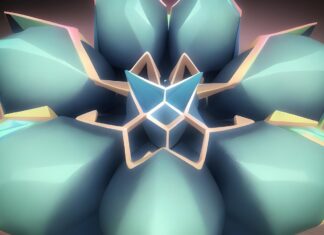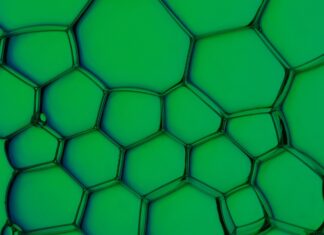Neumorphism, a design trend that has gained prominence in the realm of user interface (UI) and user experience (UX) design, represents a departure from traditional design styles. This innovative approach is characterized by a distinctive blend of skeuomorphism and flat design, resulting in a visual aesthetic that has captivated designers and users alike. As we delve into the details of Neumorphism, it becomes apparent that this design trend goes beyond mere aesthetics—it embodies a philosophy that seeks to strike a balance between realism and minimalism, creating interfaces that are visually engaging and functionally intuitive.
The first mention of Neumorphism in this exploration underscores its significance as a design trend that has captured the attention of the design community. Neumorphism, often referred to as “soft UI” or “new skeuomorphism,” is characterized by a focus on depth, realism, and tactile elements. The term itself is a portmanteau of “new” and “skeuomorphism,” reflecting its evolution from the design principles of skeuomorphism while incorporating modern elements. Neumorphic interfaces often feature elements that appear to be raised or recessed, creating a sense of depth and tactility reminiscent of physical objects.
Neumorphism distinguishes itself by introducing a subtle and nuanced use of shadows and highlights, giving rise to elements that appear to extrude or inset from the background. The design style often incorporates soft gradients, creating a sense of depth and dimensionality. This departure from the flat design trend, which prioritizes simplicity and minimalism, positions Neumorphism as a response to the desire for more visually engaging and textured user interfaces. The aesthetic appeal of Neumorphism lies in its ability to evoke a sense of familiarity while embracing modern design principles, providing users with an immersive and visually rich experience.
The second mention of Neumorphism delves into its visual characteristics and the principles that define its unique aesthetic. One of the key features of Neumorphism is the use of subtle shadows to create a three-dimensional effect. Elements on the interface, such as buttons, cards, or input fields, appear to float above or sink into the background, giving the impression of physicality. This effect is achieved through careful manipulation of shadows and highlights, creating a delicate balance that enhances the overall realism of the design.
Neumorphism often incorporates a monochromatic or muted color palette, contributing to its understated and sophisticated look. The subdued colors help to maintain a sense of simplicity while allowing the play of shadows and highlights to take center stage. Additionally, the use of soft gradients in Neumorphic design adds to the visual depth, making the elements on the interface appear more tactile and interactive. The result is a user interface that feels approachable, intuitive, and aesthetically pleasing.
Furthermore, Neumorphism extends beyond individual elements to consider the overall layout and composition of interfaces. The design trend encourages the use of rounded corners and smooth curves, contributing to a softer and more organic appearance. This departure from sharp edges and rigid structures aligns with the overarching goal of creating interfaces that feel more inviting and user-friendly. The emphasis on gentle transitions and subtle gradients reinforces the overall harmony of Neumorphic design, fostering a cohesive and visually pleasing user experience.
The third mention of Neumorphism brings attention to its practical applications and the considerations that designers must bear in mind when implementing this design trend. Neumorphic interfaces are well-suited for a variety of applications, ranging from mobile apps to websites and software interfaces. The tactile and realistic qualities of Neumorphism make it particularly effective in applications where users engage with virtual representations of physical objects, such as buttons or sliders.
However, the implementation of Neumorphism requires a delicate balance to avoid visual clutter and maintain usability. Designers must consider factors such as contrast, accessibility, and hierarchy to ensure that Neumorphic interfaces remain user-friendly and do not compromise the overall user experience. While Neumorphism introduces a departure from the stark simplicity of flat design, it is essential to strike a balance that prioritizes aesthetics without sacrificing functionality.
Neumorphism’s impact extends beyond the visual realm, influencing interactions and user behaviors. The tactile nature of Neumorphic elements invites users to interact with the interface, creating a sense of engagement and responsiveness. This can enhance the overall user experience by providing visual cues that indicate the interactive nature of certain elements. For example, a Neumorphic button may appear to lift off the background when pressed, providing users with a satisfying and visually intuitive response to their actions.
As Neumorphism continues to evolve, it sparks discussions within the design community about its longevity and adaptability. Design trends are inherently dynamic, and Neumorphism represents a shift in the pendulum from the stark simplicity of flat design to a more textured and realistic aesthetic. The ongoing dialogue among designers involves exploring ways to refine and iterate upon Neumorphic principles, ensuring that they remain relevant and effective in a rapidly changing design landscape.
Neumorphism stands as a compelling design trend that merges realism with minimalism, creating interfaces that are visually engaging and functionally intuitive. Its unique combination of soft shadows, highlights, and subtle gradients contributes to a sense of tactility and dimensionality, setting it apart from traditional design styles. As designers experiment with and refine Neumorphic principles, its impact on the user experience and the broader design community continues to unfold, shaping the visual language of digital interfaces in innovative and aesthetically pleasing ways.
Neumorphism’s versatility is evident in its adaptability to various design contexts, from mobile applications to web interfaces and desktop software. Designers appreciate the creative freedom that Neumorphism affords, allowing them to experiment with textures and depth while maintaining a user-centric focus. The trend’s capacity to bridge the gap between the tactile and the digital has led to its exploration in diverse industries, including e-commerce, finance, and entertainment. Neumorphism’s ability to strike a balance between realism and simplicity makes it a compelling choice for applications that benefit from a visually immersive yet accessible user interface.
The evolution of Neumorphism also intersects with advancements in technology, such as augmented reality (AR) and virtual reality (VR). As these immersive technologies gain traction, designers are exploring ways to integrate Neumorphic principles into AR and VR interfaces. The tactile qualities of Neumorphic elements align seamlessly with the goal of creating virtual environments that feel tangible and responsive. This convergence opens up new possibilities for enhancing user experiences in AR and VR applications, where the fusion of the physical and digital realms is a central theme.
One of the considerations in Neumorphic design is its impact on accessibility. While the trend introduces a visually rich and engaging aesthetic, designers must be mindful of maintaining sufficient contrast and ensuring readability for all users, including those with visual impairments. Accessibility guidelines and best practices play a crucial role in shaping the responsible implementation of Neumorphism, ensuring that the design remains inclusive and user-friendly across diverse demographics.
Neumorphism’s rise has prompted discussions about the interplay between design trends and brand identity. As organizations seek to differentiate themselves through unique and memorable visual identities, the choice of design language becomes a strategic decision. Some brands may find that adopting Neumorphism aligns with their ethos, offering a contemporary and sophisticated appearance. However, the challenge lies in striking a balance between adhering to design trends and cultivating a timeless brand identity that withstands the test of evolving aesthetics.
The community-driven nature of design discourse ensures that Neumorphism remains an evolving conversation. Designers share insights, tutorials, and critiques, contributing to a collective understanding of best practices and innovative applications of Neumorphic principles. This collaborative spirit fosters a dynamic environment where designers inspire and learn from each other, contributing to the evolution and refinement of Neumorphism as a design language.
The intersection of Neumorphism with other design trends, such as dark mode, dynamic interfaces, and microinteractions, showcases its compatibility with a diverse range of design elements. Dark mode, in particular, complements Neumorphism’s emphasis on shadows and highlights, creating a visually striking aesthetic. The dynamic nature of Neumorphism allows for seamless integration with microinteractions—subtle animations or responses to user actions—that enhance the overall user experience and contribute to a sense of interactivity.
Neumorphism’s impact on the design tool landscape is another facet of its influence. Design software and prototyping tools incorporate features and functionalities that cater to Neumorphic design principles, making it easier for designers to experiment with and implement this visual language. The integration of Neumorphism into design tools aligns with the industry’s commitment to providing designers with the resources needed to explore and express their creativity.
The ongoing evolution of Neumorphism raises questions about its role in shaping the future of UI/UX design. While design trends are inherently cyclical, Neumorphism’s departure from the starkness of flat design suggests a lasting impact on the visual language of digital interfaces. Designers, UX researchers, and industry stakeholders continue to explore the nuances of Neumorphism, seeking to uncover new possibilities and refine existing principles.
In conclusion, Neumorphism stands at the forefront of contemporary UI/UX design, offering a visually engaging and tactile aesthetic that resonates with designers and users alike. Its unique blend of realism and minimalism creates interfaces that are not only aesthetically pleasing but also functionally intuitive. As Neumorphism continues to be refined, discussed, and embraced within the design community, its influence on the broader digital landscape remains significant, shaping the way users interact with and perceive digital interfaces in the ever-evolving realm of technology and design.


















